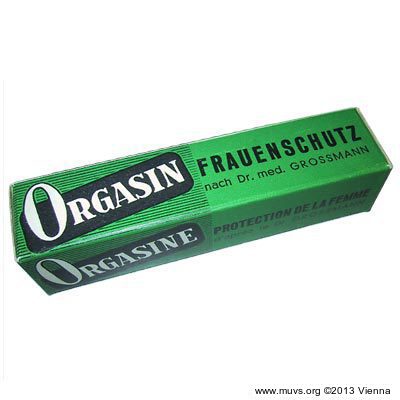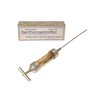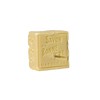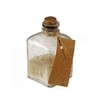
Substances
For example: air embolism, barite (barium, a mineral), caustic potash solution (potassium carbonate, soap), citric acid (cleaning agent), dirty objects or fingers as a means of introducing infection, ergot (toxic fungus that grows on plants), glycerin (chemical product nowadays used as an antifreeze), hot injections, juniperus virginiana L. (Eastern Redcedar, a plant), membrane sweeping by inserting a finger through the cervix (to induce contractions), nitric acid (strong corrosive acid), nitrobenzene (toxic chemical product), opium and morphine (drugs), paraffin (fuel, cleaning agent), quinine (from the bark of a tree, in high doses induces contractions and is still used today in Africa), quicksilver (metal), stimulation of the breast with cupping glasses, steam, turpentine oil (solvent), ustilago maydis (pathogenic plant fungus), yew (an evergreen conifer), wounding of the genitals, roots of the garden (plants).
Whatever came to hand has been tried, regardless of whether it was suitable.
In his 1925 book 'Der Arzt für alle' [The Doctor for All], E. Hofmann wrote, “there is no way of poisoning the embryo without occasioning a poisoning of the mother’s body … mechanical abortion methods all have the same aim, namely one way or another to cause the embryo to die in order that it be expelled from the uterus. All attempts by lay people to achieve this are highly dangerous and they have already done a great deal of harm. The number of fatalities that they have caused cannot even be estimated; infections of varying severity always follow; if a woman comes through an abortion unharmed it is certainly the exception… so we conclude that there … is not a single method of abortion that is on the one hand safe and on the other reliable.”
He could not foresee the safe and gentle abortifacients and abortion methods we have today.
 Interruptin Syringe Set
Interruptin, which was used for medical abortions, had to be …
Interruptin Syringe Set
Interruptin, which was used for medical abortions, had to be …
 Soap
Soap was once commonly used to perform illegal abortions. A …
Soap
Soap was once commonly used to perform illegal abortions. A …
 Soap solution
Abortion method
Soap solution
Abortion method